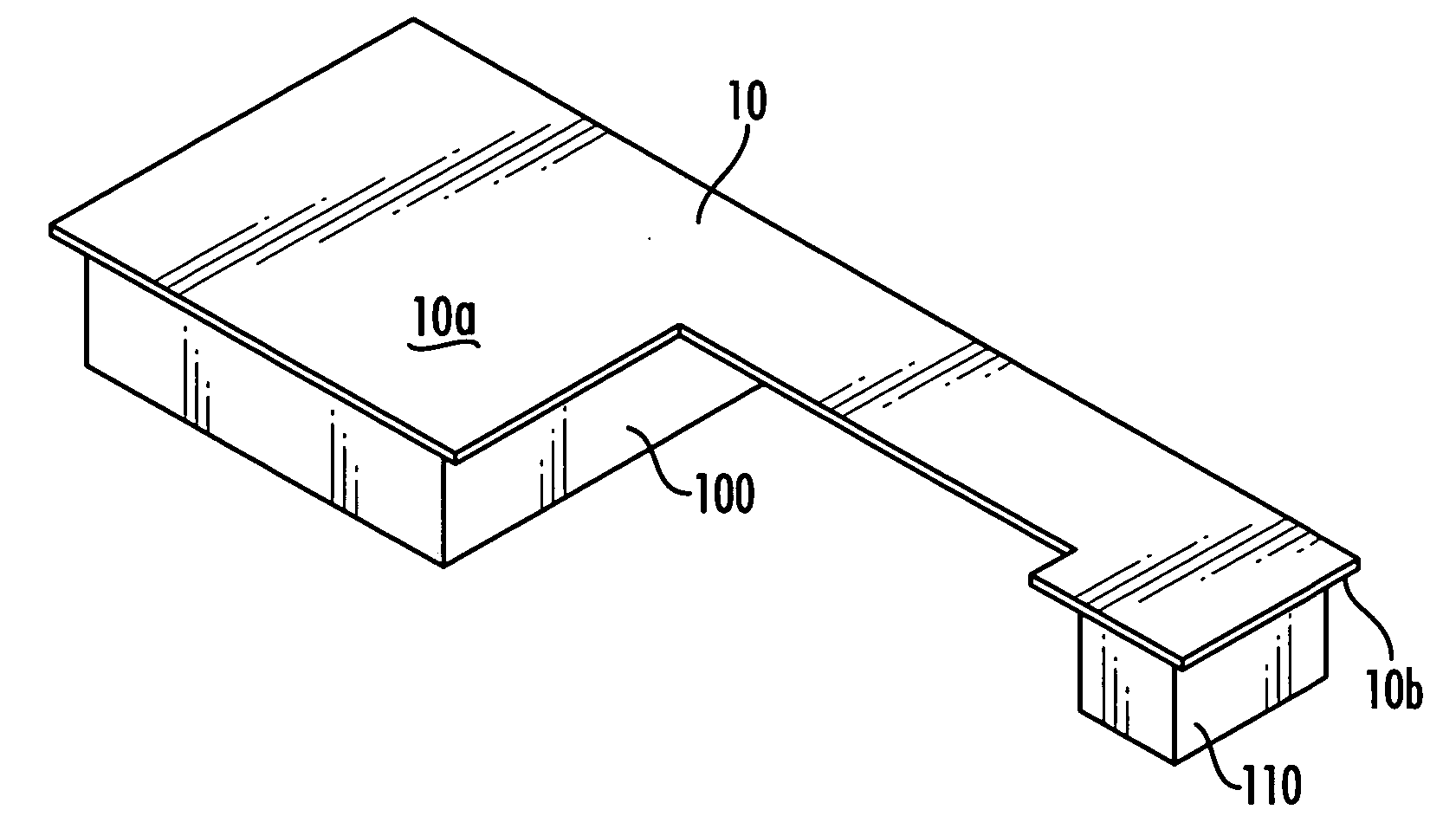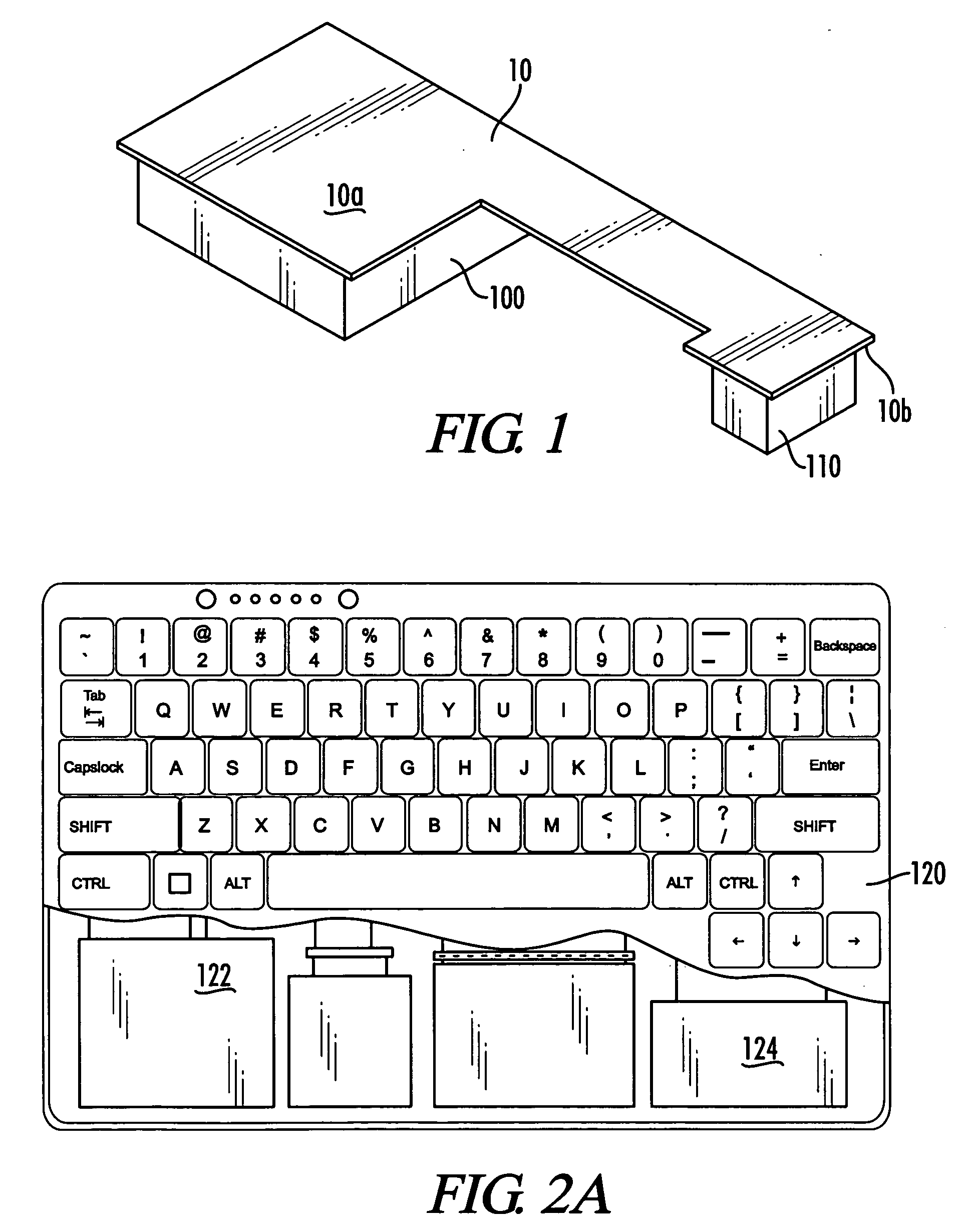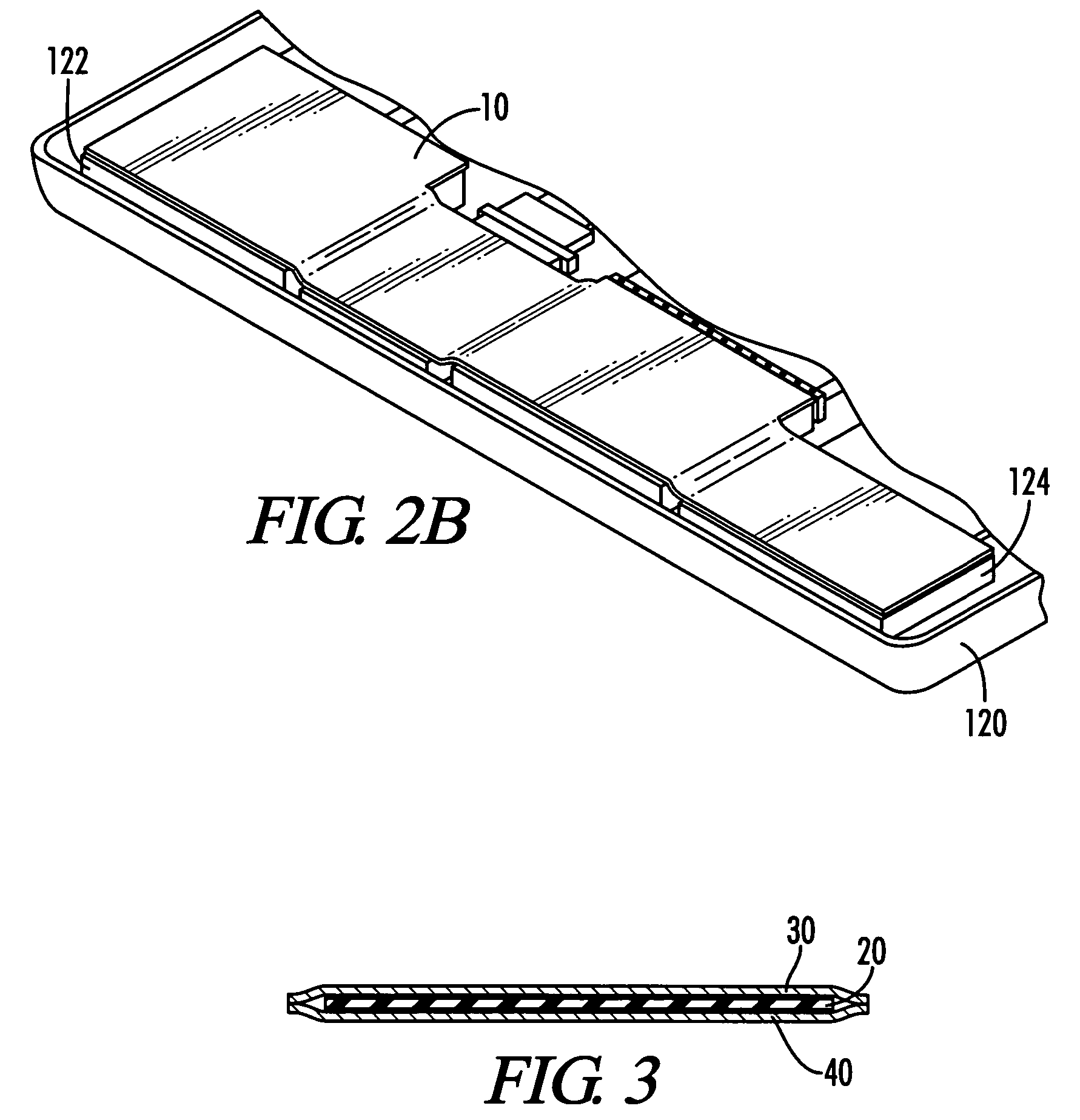Sandwiched thermal solution
a technology of thermal solution and sandwiched shell, which is applied in the direction of lighting and heating apparatus, instruments, and semiconductor/solid-state device details, etc., can solve the problems of system failure, degrade the performance and reliability of the overall system, and harm the own performance, so as to improve mechanical robustness and handleability of thermal solution, high thermal anisotropic ratio, and improve the effect of mechanical robustness and handleability
- Summary
- Abstract
- Description
- Claims
- Application Information
AI Technical Summary
Benefits of technology
Problems solved by technology
Method used
Image
Examples
example i
[0099] The thermal characteristics of the several embodiments of the inventive sandwich were compared with those of several materials often employed as thermal solutions for electronic equipment, by measuring thermal conductivity (Tc), expressed as W / m° K, and thermal diffusivity (Td), expressed as mm2 / sec. Each of the samples tested were 1.3 mm in total thickness, and comprised: [0100] (1) flexible graphite; [0101] (2) copper; [0102] (3) aluminum; [0103] (4) aluminum nitride; [0104] (5) a sandwich formed of 0.5 mm copper, 1.2 mm of the flexible graphite of material (1), and 0.5 mm of copper; [0105] (6) a sandwich formed of 0.5 mm aluminum, 1.2 mm of the flexible graphite of material (1), and 0.5 mm of aluminum; and [0106] (7) a sandwich formed of 0.5 mm aluminum nitride, 1.2 mm of the flexible graphite of material (1), and 0.5 mm of aluminum nitride.
[0107] The results are set out in Table I:
TABLE IThermalSampleconductionThermal diffusionGraphite240230Cu368108Al21098Aluminum nitr...
example ii
[0108] The thermal characteristics of different embodiments of the inventive sandwich were compared with those of several materials often employed as thermal solutions for electronic equipment, by measuring thermal conductivity (Tc), expressed as W / m° K, and thermal diffusivity (Td), expressed as mm2 / sec. Each of the samples tested were 1.5 mm in total thickness, and comprised: [0109] (1) aluminum; [0110] (2) silicon; [0111] (3) flexible graphite; [0112] (4) a sandwich formed of 0.1 mm aluminum, 1.3 mm of silicon, and 0.1 mm of aluminum; [0113] (5) a sandwich formed of 0.1 mm silicon, 1.3 mm of aluminum, and 0.1 mm of silicon; [0114] (6) a sandwich formed of 0.1 mm aluminum, 1.3 mm of the flexible graphite of material (3), and 0.1 mm of aluminum; and [0115] (7) a sandwich formed of 0.1 mm of the flexible graphite of material (3), 1.3 mm of aluminum, and 0.1 mm of the flexible graphite of material (3).
[0116] The results are set out in Table II:
TABLE IIThermalThermalSampleconductio...
example iii
[0117] A series of sandwich thermal solutions was prepared, using graphite materials having different thermal conductivities. In each case, the sandwich was 1.55 mm in thickness, 15 mm in width and 400 mm in length. The sandwiches were subject to 200 tons of pressure to eliminate air between the layers. A 10 watt heat source was placed 20 mm in from one of the edges of the sandwich, a first thermocouple was placed 20 mm in from an edge of the sandwich opposite the heat source, and a second thermocouple was placed 200 mm from the first thermocouple. The thermal conductivity and thermal diffusivity of each sample was then calculated. The samples tested were: [0118] (1) a sandwich formed of 0.05 mm aluminum, 1.45 mm of graphite having a thermal conductivity of 200 W / m° K, and 0.05 mm of aluminum; [0119] (2) a sandwich formed of 0.05 mm aluminum, 1.45 mm of graphite having a thermal conductivity of 400 W / m° K, and 0.05 mm of aluminum; [0120] (3) a sandwich formed of 0.05 mm aluminum, 1....
PUM
 Login to View More
Login to View More Abstract
Description
Claims
Application Information
 Login to View More
Login to View More - R&D
- Intellectual Property
- Life Sciences
- Materials
- Tech Scout
- Unparalleled Data Quality
- Higher Quality Content
- 60% Fewer Hallucinations
Browse by: Latest US Patents, China's latest patents, Technical Efficacy Thesaurus, Application Domain, Technology Topic, Popular Technical Reports.
© 2025 PatSnap. All rights reserved.Legal|Privacy policy|Modern Slavery Act Transparency Statement|Sitemap|About US| Contact US: help@patsnap.com



